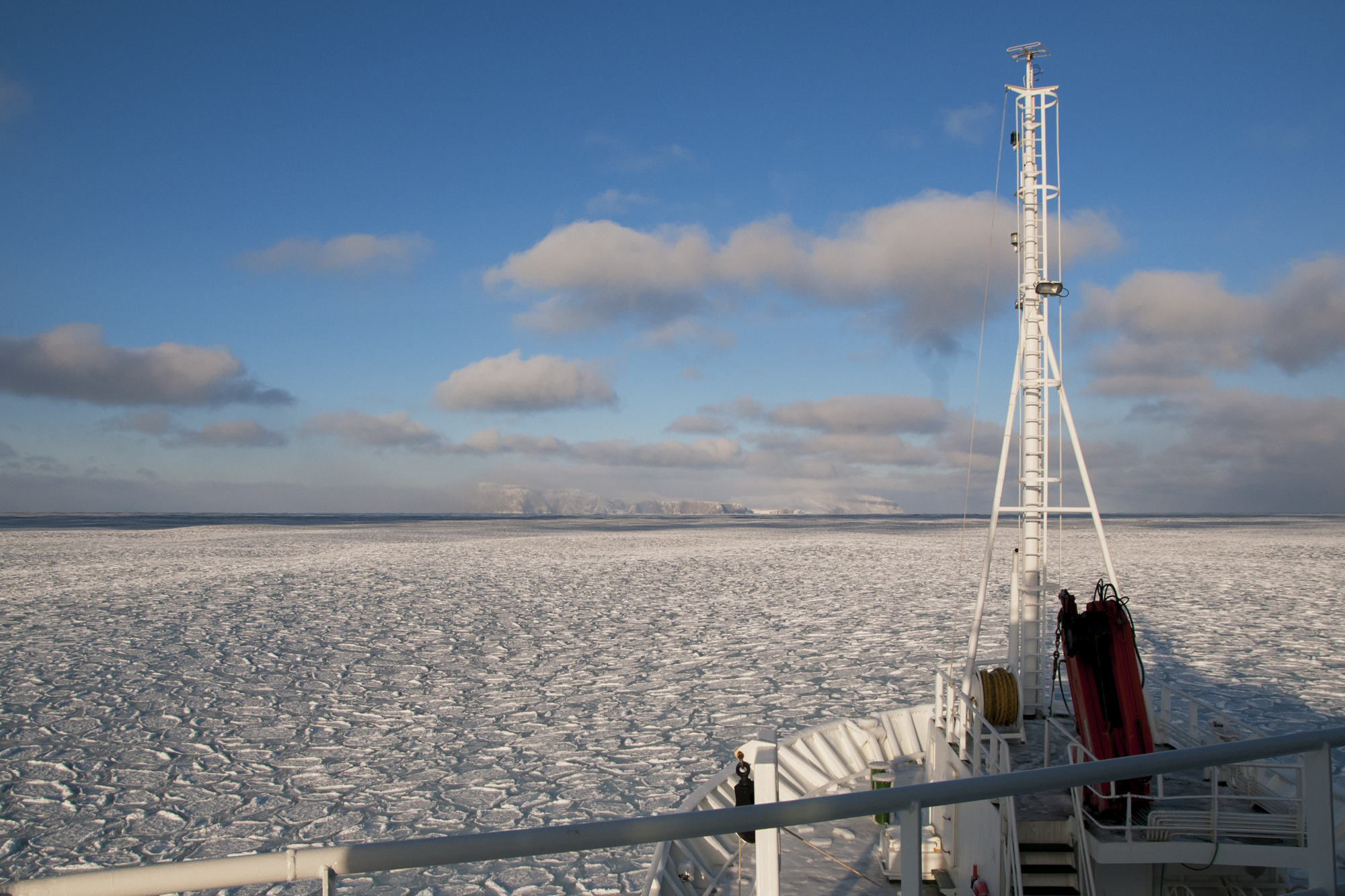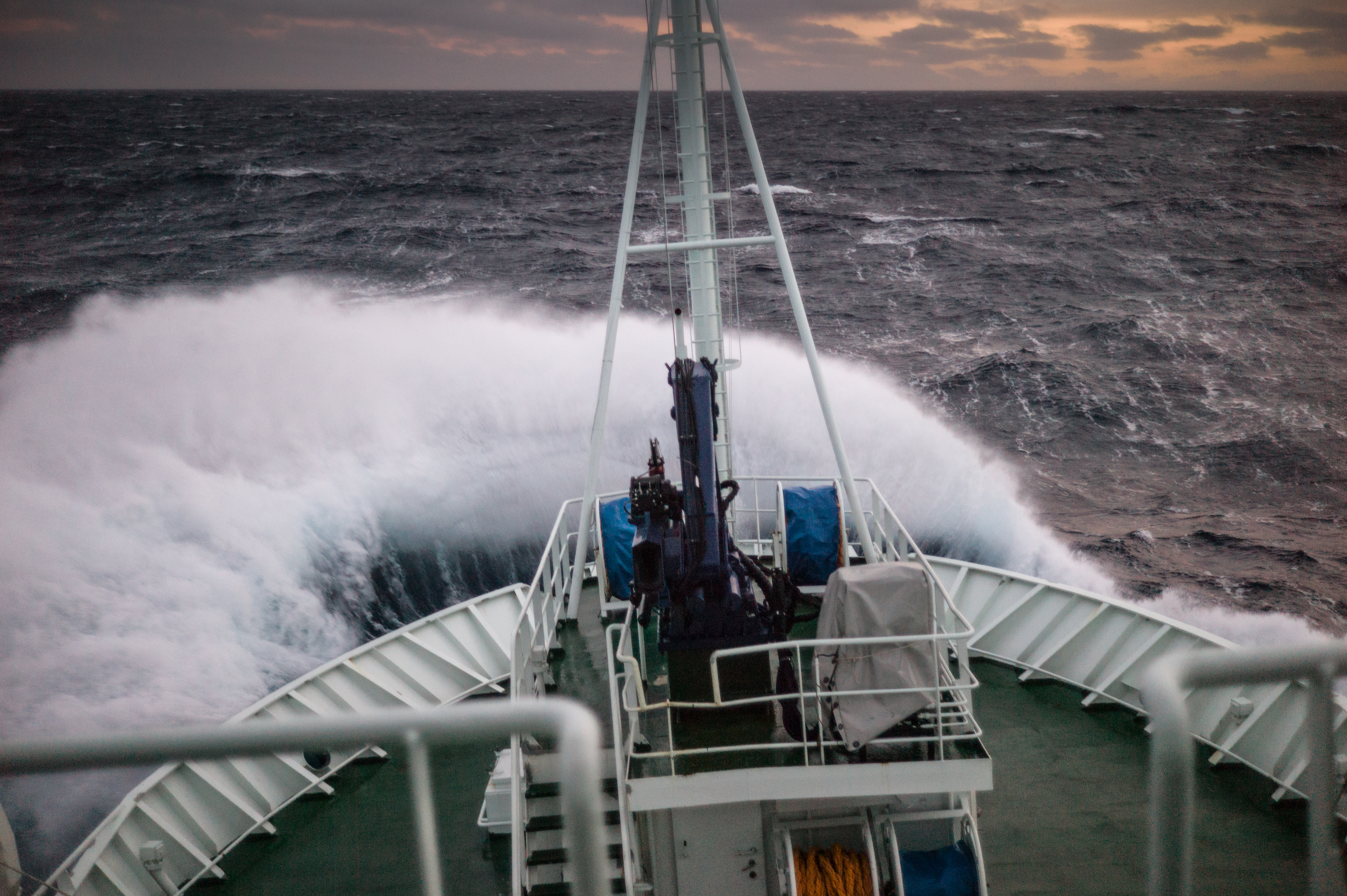The Barents Sea and Arctic Ocean Ecosystems

Winter sky in the Barents Sea. Photo: Erik Joel Steinar Olsen
Programme Description
The Barents Sea is shared with Russia, and we have a long and productive collaboration regarding fisheries and the environment of this sea (formalized in 1958). This shelf sea is home to the North-East Arctic cod stock, which currently is the largest cod stock in the world. The management of the stock has been highly successful. Due to a lowered fishing pressure in recent years and a favourable climate (for cod), the stock has increased in numbers and expanded its living areas to the entire Barents Sea. As the sea ice retreats, the cod and some other fish species (such as haddock) expand their living areas northward. This might have implications for other species living there, and changes in the ecosystem can be expected: some Arctic species might be lost, and the ecosystem structure might change substantially. Other changes that has happened in recent years is the invasion of the snow crab from the east – spreading westward. Some expect this species to become a valuable commercial resource, but it is also a potential threat to the existing ecosystem.

Impact
The impact of the IMR in polar areas is founded on the extensive monitoring of all ecosystem components that has been maintained over 5 decades. This monitoring has been done in close collaboration with our Russian collaborators in PINRO (the Arctic Fisheries Research Institute). The monitoring data is used for research and to provide the scientific advice for managing the extensive marine resources in the Barents Sea. The management has been very successful and has for example resulted in a record high abundance of North-East Arctic cod. The total first hand value of the Arctic stocks is close to 20 MRD NOK. The IMR also contribute strongly to environmental monitoring, for example in relation to the Norwegian Management Plan for the Barents Sea, which is used extensively by several Norwegian Ministries. The institute produce about 70 scientific papers on polar research each year, covering a wide range of topics and several of them in high ranking journals. Most of our research has an applied focus and is of high societal relevance both for managers and the different industries.
Core Activities
Data/Monitoring
The IMR has an extensive monitoring program for the Arctic covering all ecosystem components and all ice-free areas several times a year. In the winter, we cover the Barents Sea up to the ice edge, and in late summer we have full coverage of the whole ocean. In late summer, we also cover the whole ecosystem, from plankton to whales, including abiotic information (approx. 300 stations each year). This ecosystem survey is probably the most extensive ecosystem survey in the world regarding geographical area and ecosystem coverage.
Research
Ecosystem research is one of the areas where we have delivered outstanding work, mostly due to a full-scale coverage of the ecosystem and in-depth knowledge on the main key species. Furthermore, the multidisciplinary composition of scientists ensures a comprehensive approach in our research efforts to support management advice with knowledge of ecosystem structure, function and variability. We have been able to document Arctic ecosystem changes due to climate warming and the food web consequences of perturbations – using both empirical data and modelling. Our efforts together with national and international partners have enabled quantification of effects of human activities on harvestable resources and key species.
Advice
Our marine resource and ecosystem monitoring and advice to management have led to world class management of the biggest cod stock in the world. We are heavily involved in developing new scientific assessment methods for commercial resources, and among the few that use multispecies information as a basis for advice on catch quotas – for fish and marine mammals.

Future Challenges
Warming of the Barents Sea and adjacent waters has entailed a situation where boreal and sub-arctic species have extended their distribution north-eastwards in the Barents Sea, and this situation are expected to persist as the global warming increases. In addition, new and non-native species such as the snow crab are likely to spread in these areas within a few years. Availability of abundant commercial species will probably lead to an interest for commercial exploitation. An evolving new commercial fishery will need an assessment of the commercial stocks to be able to manage them in a sustainable way. The appearance of new abundant predators in these ecosystems may highly affect the local marine food webs which may have consequences for local top predators such as seabirds and cetaceans.
In addition, the northernmost extension of the biological rich northern North Atlantic, is of interest regarding the future biological production of the deeper Arctic Ocean. Atlantic Water carried northwards brings heat, thereby affecting thermal conditions as well as the sea ice cover. The Atlantic current also supplies the region with nutrients and drifting organisms like zooplankton and micronekton. This advective regime fuels life in the Arctic Ocean. Predicting future changes in pelagic ecosystem of the deeper Arctic Ocean, is important regarding resource management in future ice free regions.
Published: 28.05.2021

